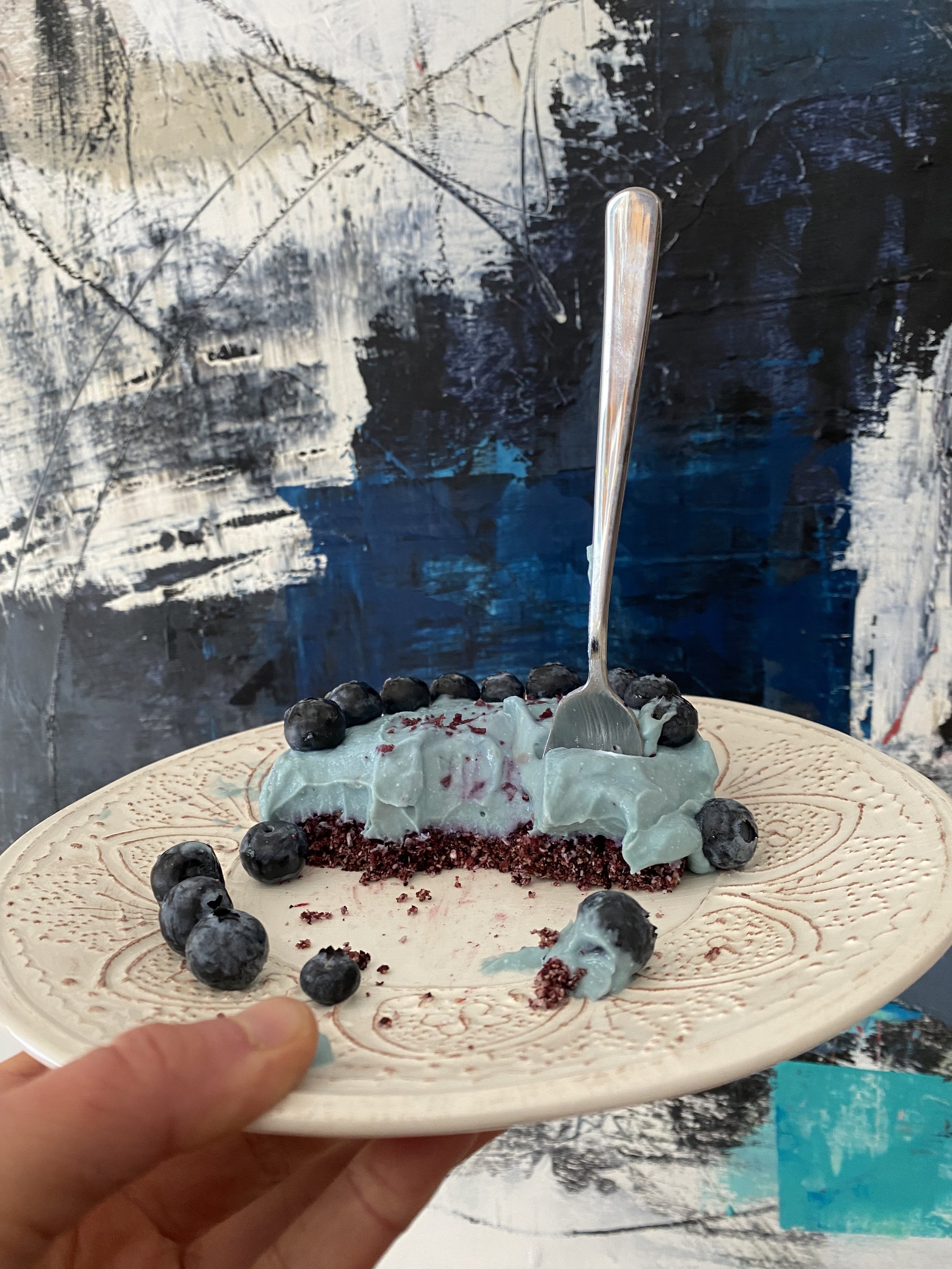[Note that this was all dictated, so please excuse typos.]
May is M.E. Awareness Month. As a part of this month, there are several events that specifically aim to build visibility of this profoundly misunderstood and misrepresented disease. Note that I am using M.E. because that is preferred by the patient community, though the medical profession often still uses the abbreviation ME/CFS.
Annually, May 12 marks International M.E. Awareness Day. The date May 12 was chosen because it is the birthday of famous nurse Florence Nightingale. We hear much of her heroism and her contributions to medicine, but her story most frequently ends at age 30 or so. Why? Like so many people with M.E. (abbreviated by the community PwME), Nightingale “disappeared” around this age. She was stricken with an M. E.-like illness following the Crimean War and was largely unable to work and bedridden for the rest of her life. So many of us PwME, myself included, find our stories untold, silenced, forgotten after M.E. affects our lives. This month, and specifically May 12, represent an opportunity to make change: to tell our stories, to build community even as we must be isolated in our homes and beds, to ask our allies to cry out and advocate on our behalf we we no longer have energy to do so. Did you know that of all major diseases M. E. is the least funded in proportion to disease burden by the NIH? Did you know that physicians and clinical providers speak with four times more negative language about M. E. than any other disease or illness?
Because PwME often have limited energy to advocate for themselves, allies are needed to change the way that stories are told, and help bring attention to the millions missing from our own lives.
May 14 is another important day. The second Sunday of May is known as Blue Sunday, a day to wear blue, drink tea, eat cake, and raise funds for M.E. research. In fact, I started my own fundraiser that goes directly to Solve M.E. here. This international day for fundraising and coming together is asynchronous, encouraging pacing, and appropriate participation based on energy level.
For Blue Sunday, I created a paced recipe for my own solo tea party, which I had a week prior (May 7th) to pace my energy for posting and advocacy for the following week’s big events.
As a PwME, I often find myself wrestling with how much energy I want to spend on cooking and how much energy I have to spend. One way that I’ve worked on this imbalance is by supine recipe development. While resting in bed or on the couch, I think about a recipe, imagining each step and ingredients, trying to troubleshoot what could go wrong. I then think about ways that I can break the recipe up into steps to allow for resting between phases.
I developed this recipe for a Blue Sunday tea cake in my head over about a week, then I sent my loving (and busy!) partner out for groceries. Once I had all my ingredients, I made this recipe over a period of three days. Many PwME have dietary restrictions and sensitivities that come with the overactivity of their immune systems. I’ve recently had some trouble with sugar, so this recipe concocts something sweet but low in refined sugar, and I taste-tested without it causing a reaction.
I hope you’ll find this tea cake one that you can make, have, and eat, too. If you do, I hope you post images to social media, tagging me (@apronon on Instagram and/or @Hollis Mickey on Facebook) and #TeaPartyForME2023 and #BlueSunday2023.
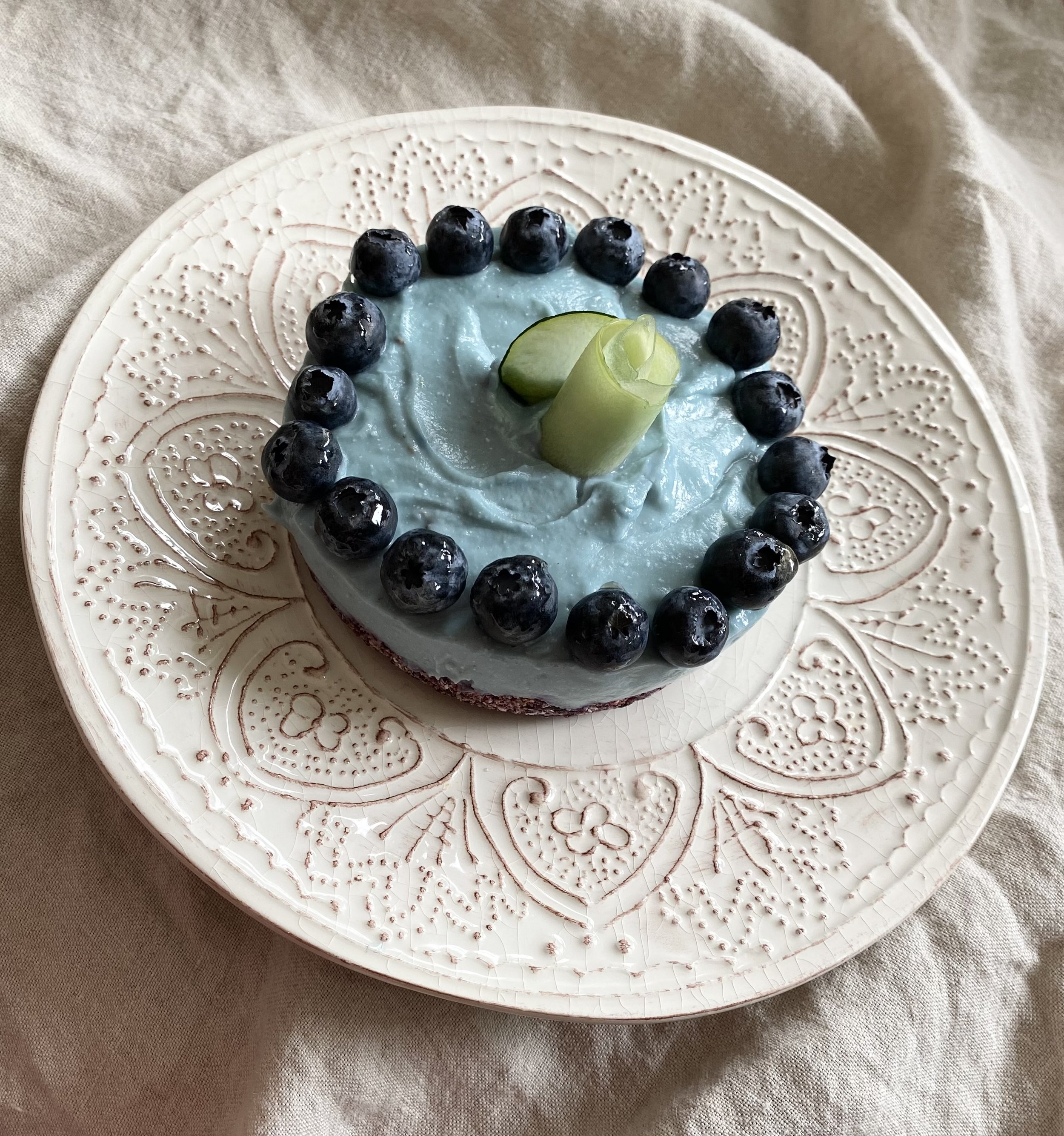
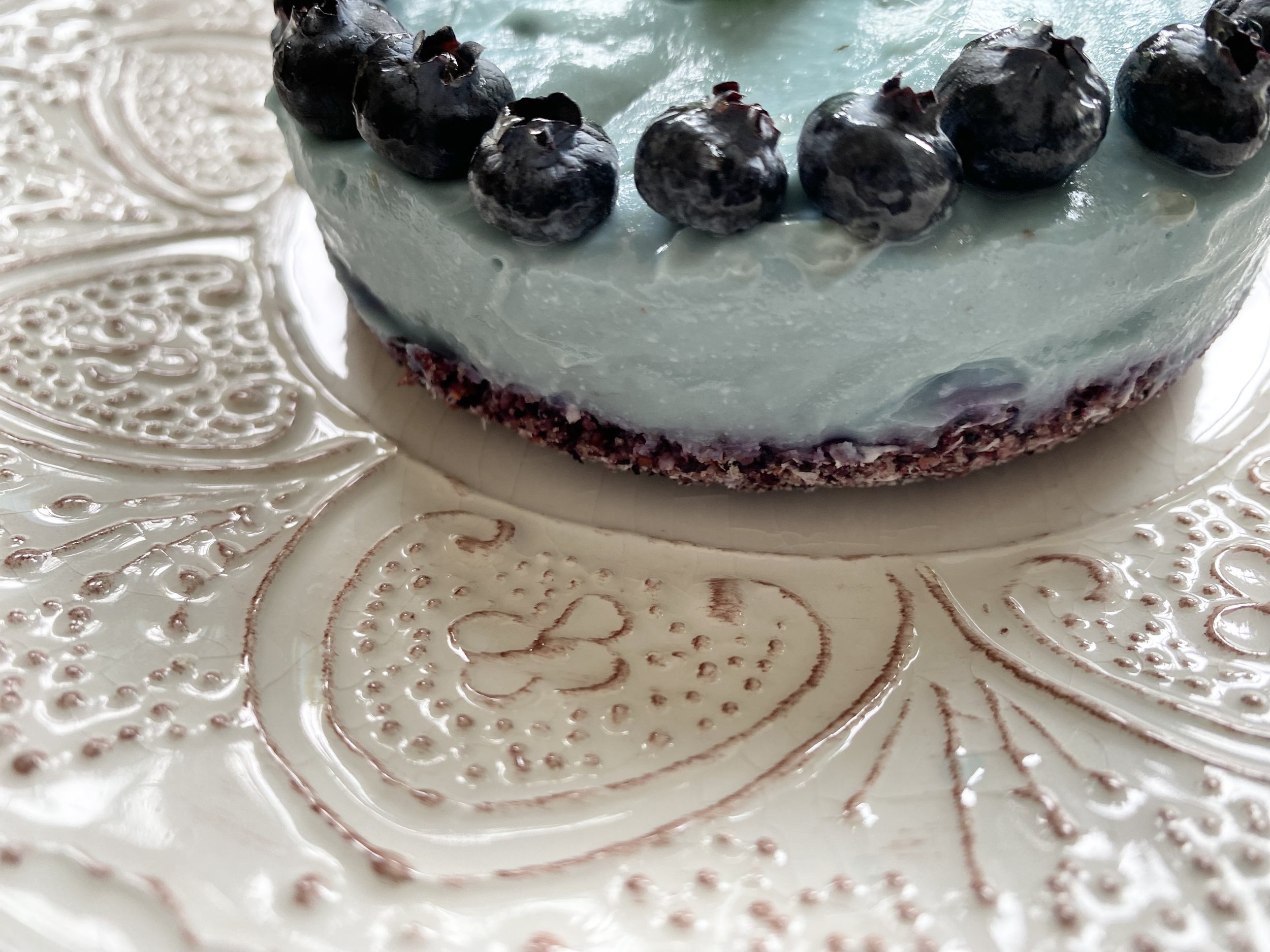
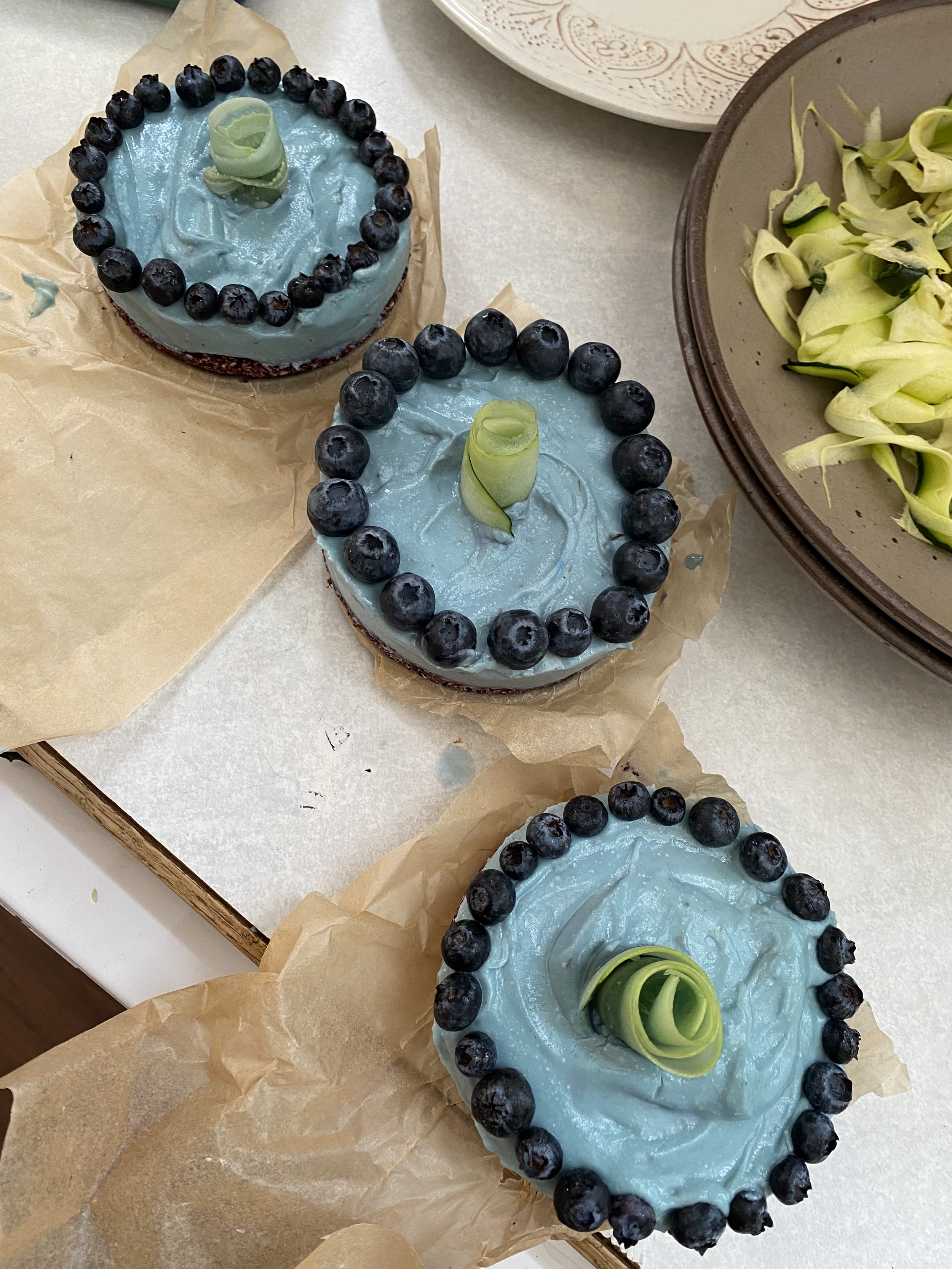
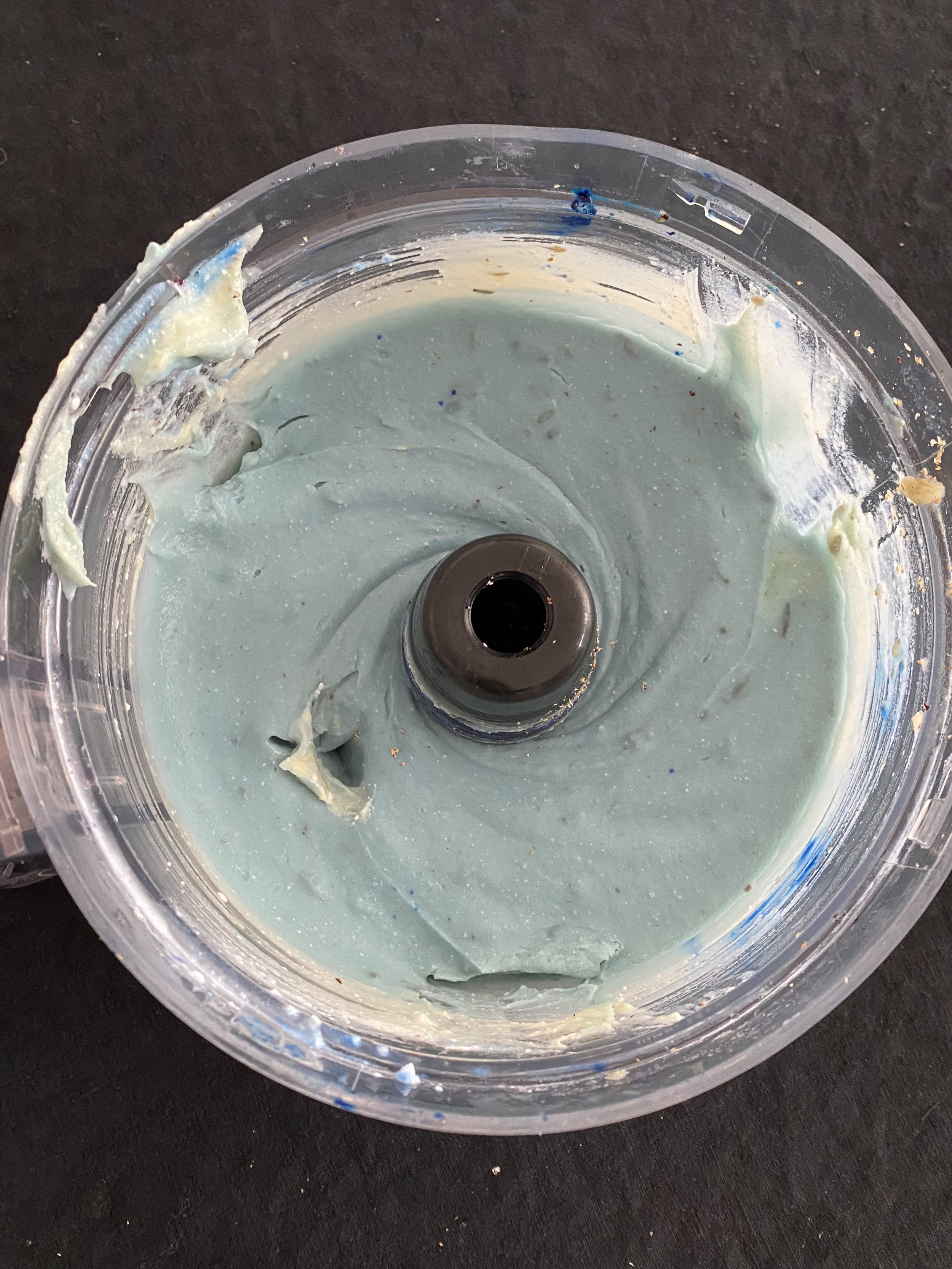
Tea Party for ME tea cake for me (and you, too)
Makes four 4 inch cakes in springform pans or one 6 inch cake. Don’t have a springform? make in a muffin tin, filling six cups.
Upright time: Approximately 40 minutes total to be broken up as needed by cook as recipe indicates (rest is built in and mandatory for ingredients!). I made this over three days.
For the crust
2 cups your favorite cereal (here’s mine)
1 cup freeze-dried blueberries
1/4 cup coconut shreds
2 tablespoon maple or date syrup
1 tablespoon milk, juice, or water
For the filling
1 1/4 cup cottage cheese
3 small white sweet potatoes (makes about 3 cups when peeled and roughly chopped; I like the satsumaimo variety)
1-2 tablespoons honey, maple syrup, or agave
1 teaspoon vanilla extract
1 teaspoon blue spirulina (for color, optional)
1 tablespoon lavender flowers (optional, or sub in any flavoring of your choosing)
1/4 teaspoon salt
To make the crust:
1. Line springform pans with parchment (about 5 minutes upright; you can cut parchment laying down as needed).
2. In a food processor, pulse together all ingredients until they are fully pulverized. Press into lined pans (5 minutes upright). Freeze until ready to use.
To make filling:
1. Peel, roughly chop, and steam sweet potatoes until fork-tender (about 10 minutes peeling and chopping; rest while steaming). Let cool for at least one hour or as long as overnight while you rest.
2. In rinsed food processor (no need to waste energy washing!), blend together all filling ingredients on low speed until well combined. Taste and add more honey as needed (about 10 minutes upright). Let filling chill at least one hour and as long as overnight while you rest.
3. Dollop filling into lined pans (about 5 minutes upright). If your filling is a bit runny (it will depend on your cottage cheese and how starchy your potatoes are), set up in freezer for about an hour. Otherwise chill in fridge while you rest.
4. Decorate as you like with fresh berries, zucchini 'roses,' or whatever you prefer (5 minutes upright).
5. Share and enjoy a paced, low sugar delight and celebrate all the PWME and their allies who come together for Tea Party for ME.
